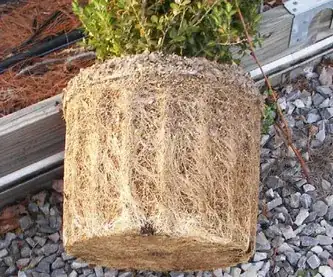This answer talks about pruning the roots of a plant when it has become rootbound.

How easy is it and how do you go about it?
This answer talks about pruning the roots of a plant when it has become rootbound.

How easy is it and how do you go about it?
Root pruning is typically done when the roots of the plant are all entangled and have begun growing around in circles. Pruning is necessary for the continued growth and health of the plant.
Pruning approaches can vary wildly, depending on how badly the plant is root bound, but the essential goal in each case is the same: free the roots! I'll describe two ways of doing it, depending on the severity of root boundedness.
Here (see examples below), the plant is just starting to get root bound and the roots outside are mostly whitish (new roots) or thin. This is perhaps the best stage to diagnose root boundedness and do the pruning, as most of the roots can be retained without very heavy pruning.
You can start by gently trying to separate out the roots. Try to squeeze and separate or use a tool to shake the soil off. You can also use your fingers to tickle the soil out of the gaps and free the roots. You might not be able to separate individual fibers in the left image, and that's ok. For the picture on the right, you might be able to separate out each of the root fibers.
Snip away any tips of the roots that are bunched up together and cannot be untangled. You needn't try to save each and every fiber. The plant can take some pruning and that's perfectly fine. Usually, these spots are around where the pot has protrusions/ridges (see bottom of both images).
The picture in the question and the following examples fall under this category. If not pruned immediately, the plant will have serious issues.
In these cases, the pruning is generally harsher, as the goal is to first free the plant from being suffocated. For the plant in the question and the first one in the right image, I would take a sharp knife and make several vertical slits (every quarter or an eighth around the base) to cut out the roots that bind it from the outside and be able to pry it open. This is necessary, because the roots have become extremely tangled and have begun going in circles.
Once you do that and start freeing up the roots, you'd actually be amazed to see that some of them are a foot to a foot-and-a-half long! After you've freed them and dislodged the soil, take a pruning scissors and go to town on the roots. Trim them down by cutting off the excess length from the mature, thick roots and keeping as much as possible, of the newer roots (these won't be that long, and you can trim the ends). Do this till you bring the root clump down to a reasonable size, with free roots, ready to be transplanted.